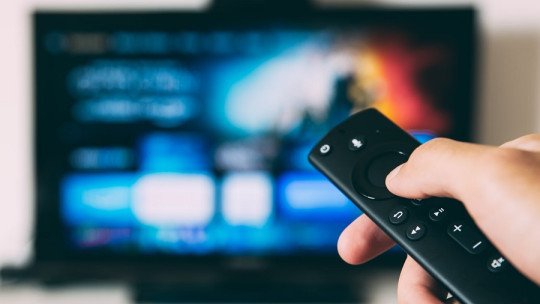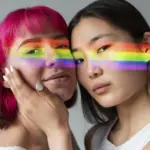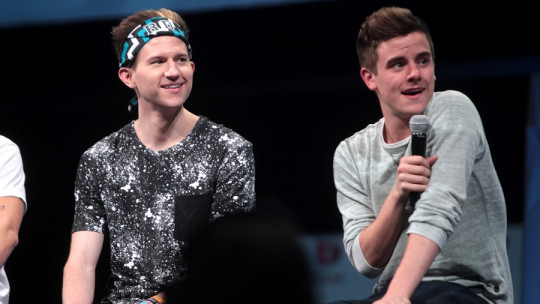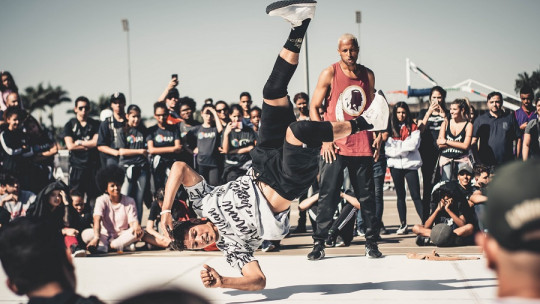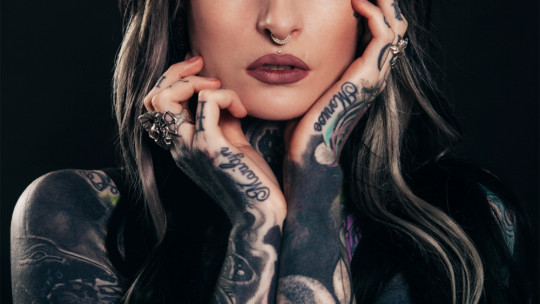Nowadays, the media, social networks and entertainment play a fundamental role in the formation of our perceptions, values and beliefs. We no longer only educate ourselves at school or in our family environments; The screens of our mobile phones put at our fingertips a multitude of references and people to look towards, seeking representation, information and even education.
Through movies, television series, music, and the personal references that can be extracted from them, we form and nourish our personality and way of perceiving the world in a certain way. The problem comes when these cultural references make use of aesthetics, messages or identities that do not belong to them with the sole objective of generating expectations, audiences and, why not say it, money.
This is the case of queerbaiting , a term that has become quite popular among conversations about LGBTIQ+ representation in the media. It refers to a practice in which, for example, in a series a romantic or sexual relationship between characters of the same sex is suggested, but it never comes to fruition; or when a heterosexual celebrity uses queer icons and references with the sole objective of generating doubt and conversation about her sexual orientation and accessing a larger audience.
Queerbaiting has become a hot topic of discussion in the LGBTIQ+ community and beyond, as it raises questions about the authenticity of representation, its cultural implications, and the way in which queer experiences are exploited or capitalized. In this article, we will explore in detail what queerbaiting is, understanding the reasons why it is a harmful practice and should be criticized and questioned.
What is queerbaiting?
Essentially, the term queerbaiting comes from the combination of two words in English: “queer” (which refers to dissident identities and the LGBTIQ+ community) and “baiting” (which could mean something similar to “putting bait”). Basically, queerbaiting can be defined as use queer experiences, stories, references and iconography as a way to attract these people, doing so in a false and intentional way Understanding queerbainting in representational media, such as films or series, can involve gestures, glances, comments or situations that suggest a romantic or sexual relationship between two characters of the same sex, but are then left unresolved or diverted into other plots. Queerbaiting plays with the audience’s hopes and expectations, often leaving them unsatisfied and feeling used.
But queerbaiting doesn’t stop there; Specific people have been accused of using queerbaiting to access a new audience and profit from it. This is the case, for example, of Harry Styles, the famous British singer. He has always been shown (intentionally?) with an undefined sexual orientation and using all the iconography and style references characteristic of queer people, but nevertheless all his public relationships have been with women and there is no proof that he represents a form of weight for people from the LGTBIQ+ group. People who are critical of queerbaiting do so because this goes beyond giving visibility to artistic currents or movements, or showing respect and empathy for queer experiences; The only reason behind it is economic and to play with the feelings and thoughts of their audiences
Impact on the LGBTQ+ community
Queerbaiting is not simply a narrative strategy or media stunt; has a real and profound impact on the LGBTQ+ community and its allies. This practice affects on an emotional, psychological and social level, and it is essential to understand its repercussions to appreciate why it is a matter of concern.
1. Emotional and psychological effects
Queerbaiting can be emotionally draining for the LGBTQ+ community. When a seemingly positive representation of LGBTQ+ relationships is presented in the media, only to then be dismissed or avoided, it can cause feelings of disappointment, frustration, and isolation in LGBTQ+ audiences. This can lead to the perception that their stories and relationships are not worthy of being explored in depth or that they are less important than heterosexual relationships.
2. Validation and self-esteem
Appropriate representation in the media is crucial to the validation of LGBTQ+ people’s identity and self-esteem. When queerbaiting becomes the norm, it risks making LGBTQ+ people feel invisible or having their experiences trivialized. This can have a negative impact on their self-perception and sense of belonging.
3. Perpetuation of stereotypes
Queerbaiting is often used as a means to exploit stereotypes about the LGBTQ+ community rather than representing their relationships in authentic and diverse ways. This perpetuates misconceptions and prejudices, which can hinder acceptance and equality in society
4. Lack of role models
The lack of authentic LGBTQ+ representation in the media also impacts the ability of young people in the community to find role models and references in their development. The absence of characters they can identify with and empathize with can make them feel isolated and alone in their experience.
5. Impact on social relationships
Queerbaiting can influence the way LGBTQ+ people are perceived and treated in their social environment. If LGBTQ+ relationships are presented in a non-serious way or as a simple element of entertainment, can lead to the invalidation of real relationships and experiences of LGBTQ+ people in everyday life
Why is queerbaiting wrong?
Although the negative repercussions that queerbaiting can have on LGBTQ+ people, who are those at whom it is directed, are now clear, you may still have questions about why queerbaiting is wrong. It is likely that the people who carry it out are not doing it in such a conscious way, but more as an aesthetic or subcultural appropriation.
However, in essence, queerbaiting is wrong because it is disrespectful to appropriate experiences, stories, and cultures to which you neither belong nor have made any effort to understand. Here are some more reasons to understand in depth why queerbaiting is wrong:
1. Encourages sensational exploration
Queerbaiting often explores LGBTQ+ relationships in a sensational or voyeuristic manner, using characters’ sexual orientation as a hook for attention without actually committing to depicting these relationships authentically. This trivializes the experiences of LGBTQ+ people and reduces their relationships to a mere object of curiosity or entertainment.
2. Minimize visibility
When queerbaiting becomes the norm in the media, there is a risk that LGBTQ+ relationships will be minimized or overlooked This contributes to the invisibility of the community and perpetuates the misconception that LGBTQ+ relationships are not important or worthy of being explored in depth.
3. Contributes to discrimination and stigma
Queerbaiting can fuel stereotypes and prejudices about the LGBTQ+ community, which in turn can contribute to discrimination and stigma. When LGBTQ+ relationships are presented superficially or used as mere entertainment, the understanding and acceptance of these relationships in society in general is difficult What also angers LGBTQ+ people is the fact that a famous cis-straight man can dress like a queer person would and be applauded for it and considered “brave”; while for the same reason, a queer person could get beaten up.
4. Break promises to the audience
One of the fundamental reasons why queerbaiting is wrong is that it breaks promises to the audience. When an LGBTQ+ relationship is hinted at and then dismissed or avoided, it creates a sense of betrayal and deception among viewers. This can lead to a loss of trust in content creators and the entertainment industry as a whole.
5. Prevents authentic representation
Queerbaiting acts as an obstacle to authentic representation of the diversity of LGBTQ+ experiences. By focusing on innuendo rather than actual representation, the opportunity to explore LGBTQ+ relationships and characters in a meaningful and respectful way is lost.
6. It affects the mental health of LGBTQ+ people
Queerbaiting can have a negative impact on the mental health of LGBTQ+ audiences. The constant invalidation and lack of meaningful representation in the media can cause emotional and psychological stress increasing the feeling of isolation and alienation.
Conclusion
In short, queerbaiting is just another form of symbolic violence towards LGBTIQ+ people. A queer person experiences many difficulties throughout their life for the sole reason of being queer that a heterosexual person can never even imagine. Therefore, exploiting these experiences and taking advantage of them is not only wrong, but is a form of violence towards these people, removing weight and value from their voices and stories.
Each person must understand where their place is, and that wanting to understand subcultures or minority groups can be fine as long as it is done with respect, understanding and acceptance; not the search for financial gain or praise for it.

